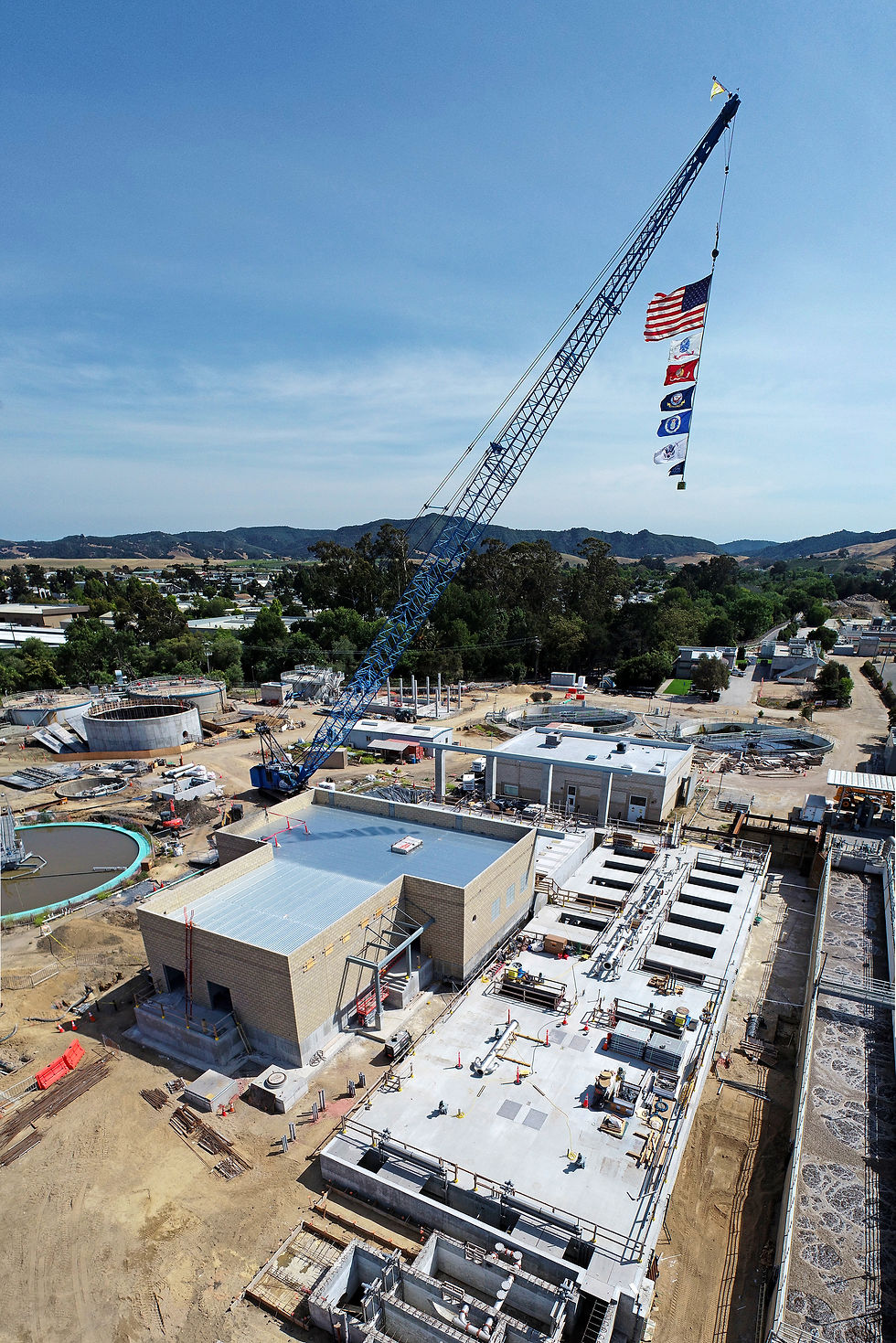Resilience by Design at the WRRF
- City of San Luis Obispo
- Aug 26, 2020
- 2 min read

Cities worldwide are facing myriad shocks and stresses—from natural disasters to the effects of climate change—that put critical infrastructure at risk. The SLO Water Plus capital improvement project includes upgrades designed to optimize the facility’s resilience to such shocks. Upgrades will help maintain the continuity of the community’s wastewater treatment operations even when disruptions hit.
Enhanced Wet Weather Protection
Extreme storm events can lead to flooding and increase the flow of wastewater coming into the WRRF, putting considerable stress on the facility. Resilience planning considers how to improve the adaptability of the WRRF to remain operational during wet weather.
During the project’s planning phase, the City developed a flood protection plan and two dimensional model based on the anticipated effects of a “100-year storm event”—meaning an intense storm that statistically has a one percent chance of occurring in a given year. Enhanced flood protection upgrades were designed to accommodate this worst case scenario, and include new retention/infiltration basins that will collect stormwater and prevent it from leaving the site, as well as an overall site design that allows the flood waters to flow through the WRRF while staying in operation. The Equalization (EQ) Basin will be doubled in size so it can accommodate the capacity demand of peak wet weather events and will allow wastewater to be stored until it can be treated.
Sustained Operations During Extreme Weather Events
Extreme weather events and natural disasters can make some equipment inoperable. The SLO Water Plus upgrade includes process redundancies. Backup equipment at each step will ensure that key processes continue to operate. These improvements include a new backup generator for power outages, and new automated controls throughout to help alert staff more quickly if an equipment failure occurs.
Wet weather events make treatment more difficult with increased flow and diluted wastewater which can inhibit biological treatment processes used at the WRRF. The addition of the Membrane Bioreactor (MBR) technology will ensure a consistent high-quality effluent can be produced even in extreme wet weather.
Improved Fire and Earthquake Protection
Many of the previously mentioned upgrades will increase the longevity of equipment or add technology that will improve emergency response in the event of a wildfire or earthquake. Additionally, SLO Water Plus includes improvements that meet the most recent fire and earthquake requirements. These include improved fire mains and fire systems throughout the WRRF; close attention to seismic design considerations locally and statewide; heavy-duty equipment anchors and restraints; and robust electrical systems. Specifically, the WRRF is replacing its dry piping system (which requires a manual fire hydrant feed for fire suppression) with a wet system where fire hydrants are automated.
Now more than ever, cities recognize the importance of resilience planning to ensure critical services continue. Forward looking projects like SLO Water Plus are helping to maintain community health and safety by making critical assets and essential services more resilient. To stay informed of project progress, subscribe for project email alerts.




Comments